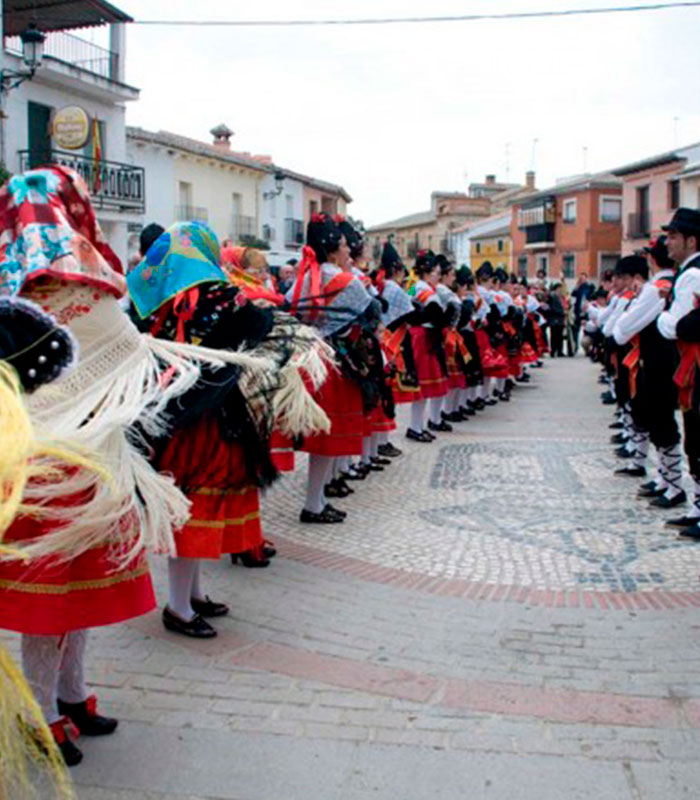The Carnaval de Ánimas of Villar del Pedroso is not a fancy-dress party. It has little to do with the most colouristic manifestations of Shrovetide. It is an ancient and outstanding festival which dates back to the 17th century and which fuses religious and military aspects and combines happiness with sadness. The dance of the serengue, one of its most characteristic elements, brings together at the sound of a drum generals and women generals, various military men, standard bearers, masters of ceremonies, authorities, locals, and visitors.
The Carnaval de Ánimas is a celebration which lasts seven days. According to tradition its origin is related to a general who was born in the village. When he realised in a battle that the enemy forces were superior, he commended himself to the Ánimas Benditas (Blessed Souls) and promised that he would dedicate a festival to them if victory was achieved. Ever since then the carnival has been held not at a fixed time but whenever a family is willing to take on the organisation. The members of this family are in charge of distributing as they see fit the various posts: general, captain, second lieutenants, sergeants, etc., which may be occupied by both men and women.
It is a complex celebration full of rituals. Although it is becoming less and less common, one of the most noteworthy is that of the committee which parades the streets when the sun goes down during the days prior to the carnival, asking for alms for the souls in purgatory. Accompanied by small drums, a cattle bell, and singing popular songs, they ask for contributions door to door. The growing darkness of the night, the cold of the season, and the solitude and silence of the streets interrupted by the singsong of the voices give this moment an ancient feel which impresses anyone surprised by the committee.
Other outstanding moments are as follows: the meeting of the military men to the noise of the shotgun salvoes of the neighbours; the fluttering of pennants during the dance of the serengue; the preparation of the Ramo de Ánimas (Bouquet of Souls) very early Tuesday morning, decorated with doughnut-shaped bread scented with aniseed; taking it to the general’s house to then go as a committee to the cemetery to honour the dead; the sale of the bread; and the races of the sergeants with their halberds. All this is permanently accompanied by the smell of gunpowder which invades the streets in waves, the smell of hot coffee, brandy, and traditional sweetmeats.
To get to know more about the Carnaval de Ánimas you can visit the interpretation centre in the so-called Casa del Labrador at Calle Real, 10 in the village. Entrance is free and includes a guided tour.
